I've been curious for awhile now ... and was wondering if there exists components that provide clocks much faster than a typical CPU can, such as up to 10 GHz or higher.
Opto-electronic Oscillators (OEOs) are oscillators that take a photonic signal, like a pump laser, modulate it, and convert it to an electrical signal using a photodiode. The signals generated by these OEOs have extremely high Q factor and thus very low jitter. Here is a diagram of an OEO, taken from this overview of OEOs. The focus here is on ultra-high stability, not a high frequency output. But, there are also OEOs that achieve high frequencies, for instance this dual-loop OEO achieves a tuning range of 32 to 42.7 GHz.

Besides photonic oscillators, frequency synthesizers can provide clocks above 10 GHz. As other answers have mentioned, these can achieve frequencies way above 10 GHz. For instance, Analog Devices makes a frequency synthesizer that generates frequencies up to 13.6 GHz. In addition, synthesizers generate the ferquencies for a signal generators such as this one, which can reach 67 GHz.
Here's a brief overview of synthesizers if you want to read it.
A synthesizer is composed of a PLL (which contains a VCO), and sometimes also a microcontroller as a means of adjusting the PLL digitally.
Quoting from an Analog Devices tutorial on PLLs:
A phase-locked loop is a feedback system combining a VCO and a phase comparator so connected that the oscillator maintains a constant phase angle relative to a reference signal. Phase-locked loops can be used, for example, to generate stable output high frequency signals from a fixed low-frequency signal.

A VCO (Voltage Controlled Oscillator) is a circuit that generates an output frequency controlled by a tuning voltage. One way to implement a VCO is to apply the tuning voltage to varactors, which adjusts the capacitance of the LC tank in the circuit and generates a different frequency.
Basically, a PLL is used to generate an in-phase multiple of a lower reference frequency. They are used to clock data converters, which can go up to multiple GSPS, and CPUs as well.
Besides PLLs, there are a variety of crystal oscillators (TCXOs, OCXOs, Sapphire Oscillators, GPS disciplined Oscillators, etc.). However, unlike synthesizers, they output a fixed frequency. They are usually designed for ultra-low phase noise and long-term stability, not high output frequencies. Due to these characteristics, they are often used as a reference for PLLs.

